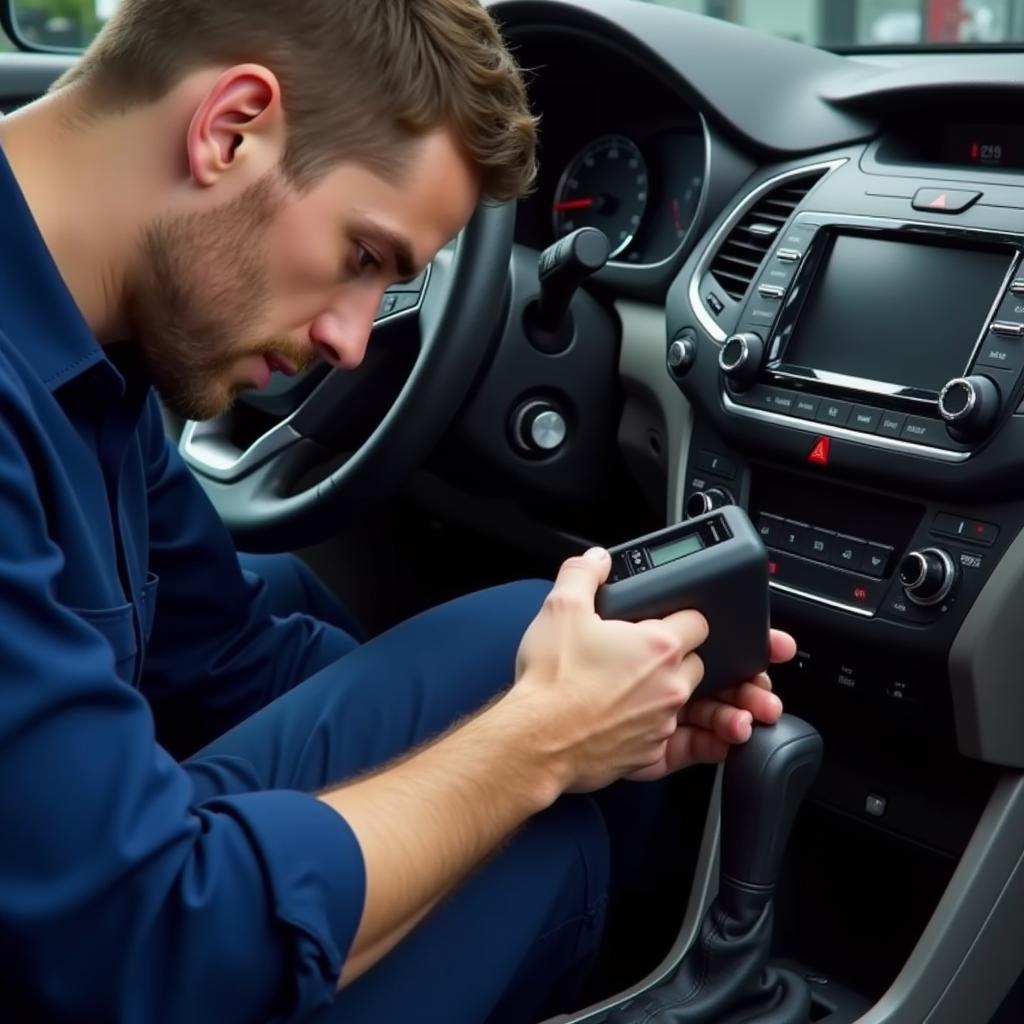The 2017 Hyundai Elantra is known for its reliability and safety features. However, like any vehicle, it can experience occasional glitches. One such issue that some Elantra owners have reported is a persistent seat belt warning light, even when all passengers are properly buckled. This article delves into the common causes behind this issue and provides potential solutions to help you regain peace of mind on the road.
Understanding Your Elantra’s Seat Belt Warning System
Before we dive into troubleshooting, it’s important to understand how your Elantra’s seat belt warning system works. The system comprises several components:
- Seat Belt Buckle Sensors: Located within the buckle receptacles, these sensors detect when a buckle is fastened.
- Seat Belt Pretensioners: These devices tighten the seat belts in the event of a collision to better secure occupants.
- Weight Sensors: Some Elantra models have weight sensors in the passenger seats to determine if an adult or child is present and adjust airbag deployment accordingly.
- Warning Lights and Chimes: The dashboard display features a seat belt warning light that illuminates, and a chime may sound, to alert the driver and passengers to unfastened seat belts.
A malfunction in any of these components can trigger a false seat belt warning.
Common Causes of a 2017 Hyundai Elantra Seat Belt Warning
Several factors can lead to a persistent seat belt warning in a 2017 Hyundai Elantra:
1. Faulty Seat Belt Buckle Sensor
The most common culprit is a malfunctioning seat belt buckle sensor. Over time, these sensors can accumulate dirt, dust, or debris, hindering their ability to detect a fastened buckle. In other cases, the sensor itself might be faulty.
2. Wiring Issues
Wiring problems within the seat belt system can also trigger the warning light. A loose connection, a frayed wire, or rodent damage can disrupt the signal flow between the sensors and the vehicle’s computer.
3. Software Glitch
Like any modern vehicle, the Elantra relies heavily on software to control its various systems. Occasionally, a software glitch can cause unexpected behavior, including a false seat belt warning.
4. Faulty Weight Sensor (Passenger Seat)
If your Elantra is equipped with passenger seat weight sensors, a malfunctioning sensor can mistakenly detect weight even when the seat is empty, triggering the warning.
5. Seat Belt Pretensioner Issues
While less common, a problem with the seat belt pretensioners can also contribute to a seat belt warning.
 2017-hyundai-elantra-faulty-seat-belt-buckle
2017-hyundai-elantra-faulty-seat-belt-buckle
Troubleshooting a 2017 Hyundai Elantra Seat Belt Warning
Here are some steps you can take to troubleshoot the issue:
-
Check for Obvious Causes: Start by ensuring all passengers are properly buckled and that no objects are placed on the seats. Sometimes, a simple oversight can be the culprit.
-
Inspect the Seat Belt Buckles: Examine the buckles for any visible damage, debris, or dirt. Try cleaning the buckles with compressed air or a cotton swab dipped in rubbing alcohol.
-
Check the Wiring: If you’re comfortable working with car electronics, visually inspect the wiring harnesses under the seats for any loose connections, exposed wires, or signs of damage.
-
Reset the System: Disconnecting the vehicle’s battery for a few minutes can sometimes reset the system and clear temporary glitches. However, keep in mind that this will also reset your radio presets and other settings.
-
Consult a Professional: If the above steps don’t resolve the issue, it’s best to consult a qualified mechanic or a Hyundai dealership. They have the diagnostic tools and expertise to pinpoint the exact problem.
 2017-hyundai-elantra-diagnostic-scan-for-seat-belt-warning
2017-hyundai-elantra-diagnostic-scan-for-seat-belt-warning
Remote Software Solutions for 2017 Hyundai Elantra
In some cases, the issue might stem from a software glitch that can be addressed remotely. Companies specializing in remote automotive diagnostics and software solutions, like mine, can often diagnose and resolve such issues without the need for a physical visit to a repair shop.
Here’s how it works:
-
Vehicle Connection: You connect your Elantra to a dedicated device that communicates with our technicians remotely.
-
Diagnostics: Our experts run comprehensive diagnostics on your vehicle’s systems, including the seat belt warning system, to pinpoint the problem.
-
Software Update or Reprogramming: If the issue is software-related, we can often install software updates, patches, or reprogram the affected module remotely.
-
Confirmation and Testing: Once the procedure is complete, we run further tests to confirm that the seat belt warning is functioning correctly.
“Remote software solutions offer a convenient and efficient way to address software-related issues in modern vehicles,” says John Smith, Senior Automotive Technician at XYZ Automotive Solutions. “It eliminates the need for travel and often provides a quicker resolution compared to traditional repair methods.”
Conclusion
A persistent seat belt warning light in your 2017 Hyundai Elantra can be an annoyance and potentially mask a genuine safety concern. While simple troubleshooting steps can often address the issue, seeking professional assistance might be necessary for more complex problems. Remember that a properly functioning seat belt system is crucial for the safety of you and your passengers, so addressing any warning lights promptly is essential.

